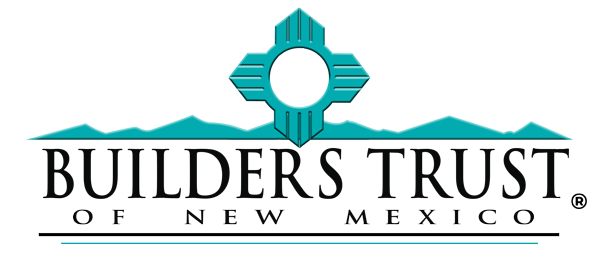
SafetyPolicy Podcasts
PROFESSIONALLY CURATED PODCASTS ON SAFETY, ADMINISTRATIVE POLICY, WORKERS COMP, AND CURRENT AFFAIRS.
Welcome to Episode 9
Ep9 BT Podcast – Why Report Hazards?
Suppose you have just walked by an area and noticed a small puddle of oil on the walkway. You pass right by it, knowing that whoever spilled it would be back to clean it up. Besides, it’s not your job to clean up spills. A co-worker happens to walk by a few minutes later, but he doesn’t see the oil. He slips and falls, his head hitting the concrete. He ends up with a severe bruise to the head as well as a broken elbow.
When you hear of the accident, you wonder,
- ‘Was it the other guy’s fault for not cleaning up the spill in the first place?”
- ‘Was it my co-worker’s fault for not watching where he was going?”
- ‘Was it my fault for not cleaning up the spill when I noticed it?”
THE ANSWER TO ALL THREE QUESTIONS IS YES!
ALL THREE PEOPLE HAD A HAND IN ALLOWING THE ACCIDENT TO HAPPEN.
Hazards may be caused by equipment malfunctions, but more often than not, they are caused by what people do or what they don’t do! We need to be on the lookout for hazards in our work area. When you find small safety hazards, remove them as soon as you notice them. More complicated hazards should be reported immediately to someone who can fix the problem. The area or piece of equipment should be blocked off or tagged out. We all need to keep pro-active about preventing safety hazards. Simply reporting them to your supervisor is not sufficient. We all need to continue to follow up until the hazards are dealt with.
Here’s another example:
You are using a power tool, and you are surprised by a slight electrical shock. You know that means the tool should be repaired or replaced. You intend to remove it from service, but you get busy and move on to another job. A co worker comes along, picks up the power tool to use it, and receives a severe electrical shock that results in a heart attack. Because of slightly different circumstances, what was a minor incident for you becomes a major accident for someone else. Once again, if you had removed the defective tool from service, your co-worker would not have gotten hurt.
If an accident takes place that you could have prevented, you won’t be able to forget it. You’ll remember every time you see the person or hear about the accident and injury. If you are the injured person, the feeling of loss or pain can be a constant reminder. Some workplace injuries become disabilities that last for a lifetime. They can affect our ability to work and to enjoy life.
All near misses must be reported. These are incidents that, if not for a bit of luck, could have been accidents. That way, these minor events can be investigated, procedures or facilities changes, and accidents eliminated. Studies show many accidents were preceded by near misses that should have served as warnings of a hazardous situation. These close calls went unreported until they were brought to light by a serious accident.
An injury free, healthy life is a good life!
Not only can defectively tools or hazardous environments put us at risk, but we can also put ourselves at risk of injury because of our actions or inaction. Think about every job you perform. Don’t put yourself at risk. And when you see someone else that may be putting themselves at risk, intervene! We have to have this attitude if we are ever going to have a workplace where zero injuries is more than a safety slogan. Please consider the following:
What are at risk behaviors in our work area?
- Taking a short cut.
- Not using the proper PPE for the hazard – for example: not using goggles when they are required; not wearing a harness when working at height; etc.
- Not following procedures.
- Adapting or using the wrong tool for the job.
- Overextending yourself rather than using a portable ladder of having a scaffold built.
- Being aware of the hazard and not putting control measures in place.
- Not properly isolating equipment to work on it. Remember the dangers of all forms of stored energy.
- Not communicating with each other.
- Entering barricaded areas without proper authorization.
What do we need to do personally to eliminate at risk behavior?
- Don’t put yourself at risk as you work.
- Don’t condone a co-worker performing an at risk behavior. If you do, your behavior becomes ‘at risk’ as well as his.
- Change the culture. Get away from the mindset that says, ‘”That’s the way I always have done things” or “I haven’t been hurt yet so it must be safe”, or “I have years of experience and it won’t happen to me”.
- We need to be honest with ourselves. We need to honestly assess whether we will do what is right all the time, but especially when working alone and when nobody is looking.
What do we need to do as a team to eliminate at risk behavior?
- Watch out for you and me and point out the at-risk behavior you see.
- Be part of the team and believe that zero accidents and incidents in the workplace are possible.
- We didn’t hurt anybody yesterday; Have the commitment to maintain that standard and ensure we don’t hurt anybody today or tomorrow.
- Don’t walk past a hazard or possible hazard; Do something about it.
- Remember 95% of all incidents are caused by some action or inaction. Eliminating at risk behavior will eliminate 95% of incidents where people get hurt! It’s a difficult task but achievable with FOCUS and YOUR commitment.
